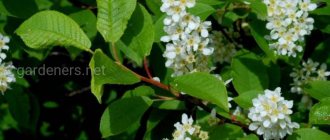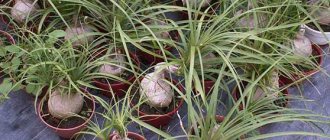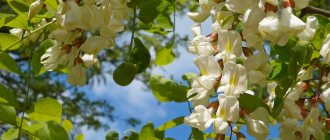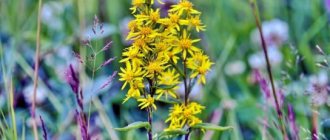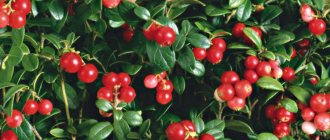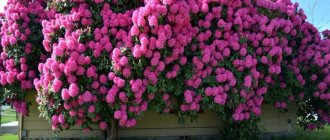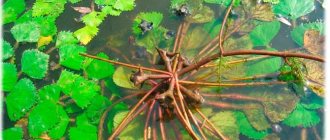America is the birthplace of this wonderful plant. It got its name after the famous botanist D. Tradescant and his son.
Tradescantia belongs to the Hammelinaceae family. This plant is widely known. It is one of the most unpretentious houseplants to care for.
The pride of Tradescantia is its striking leaves, growing on long straight shoots that have many branches, which contributes to the formation of a luxurious bush.
They are green, silver or purple in color. Some varieties of this plant have leaves with an unusual striped pattern. Tradescantia flowers are small in size and come in a variety of colors. It looks quite attractive.
There are approximately 100 varieties of this plant. Only the most popular of them are grown at home.
Varieties of Tradescantia
Tradescantia can be of the following types:
- Belotsvetkova. Characterized by pointed leaves and white flowers;
- River. It has two-color green and red leaves;
- Motley. The leaves are small with patches of white or pink;
- Scaphoid. There is fluff on the edges of its leaves;
- Lodges. It has curly shoots, large leaves with a characteristic silver stripe along each leaf.
Insect control
If parasites are detected, the plant is given a bath day - the leaves and shoots are thoroughly washed with a concentrated solution of laundry soap.
After mechanical cleaning, the plant is treated with acaricidal or insecticidal agents.
We grow Tradescantia at home. Basic Rules
This amazing plant is easy to care for. It is not demanding on the temperature conditions of the room.
For Tradescantia at home, the most preferable places are well-lit by sunlight, because the quality of lighting affects the intensity of the color of its leaves.
If the plant is placed in a place with insufficient light, its leaves will turn pale, and the variety with striped leaves will lose stripes. You also need to remember that Tradescantia does not like exposure to direct rays of the sun, because they can cause burns on the leaves.
The best option is to provide diffuse lighting. The most unpretentious to temperature and sunlight is the white-flowered Tradescantia.
The plant feels most comfortable at 24-26° C. In winter, the temperature should not fall below 10° C, otherwise the shoots begin to stretch, which spoils the appearance of Tradescantia.
To fix this, elongated shoots must be cut off; you can also use rooting of the tips. A semi-shaded room is also suitable for growing Tradescantia. The exception is the variegated variety; under such conditions it will not look very attractive.
The Tradescantia plant loves frequent watering, because it is not for nothing that it belongs to the plants of swamps. In summer there should be a large amount of watering. The soil should not be allowed to dry out.In winter, one watering every four days is recommended. Watering should be done with settled, soft water at room temperature. If you follow all the watering rules, the plant will respond with an abundance of flowers.
Tradescantia feels most comfortable if the humidity is 60%. To prevent rotting of the root system, it is recommended to regularly loosen the soil in the pot.
Twice a month it is necessary to feed the plant with special mineral fertilizers. They are added to water for irrigation.
What to do if the leaves are pale
Variegated leaves take on a bright color if the plant does not receive enough light. When there is too much light, they become pale. In this case, you need to move the flowerpot to another place.
How to transplant and propagate Tradescantia bushes
After winter, Tradescantia needs to be replanted. During the winter period, the color of its leaves and stems may change, and its attractiveness will decrease. This is how Tradescantia signals the need to replant it.
Clarkia graceful - varieties and types, care and planting, diseases + 78 photos- Irises - description of the species, cultivation, reproduction + 102 photos
Campsis - planting, care, location rules, watering, types of reproduction (67 photos + video)
To propagate Tradescantia, first cut off the green top. Then place it in a glass filled with water. After some time, roots will begin to sprout. Then the top can be planted. Once planted in the soil, it will quickly grow.
For Tradescantia, ready-made soil mixtures, sold in every flower shop, are perfect. You can also prepare the soil yourself. To do this, mix the soil, sand and peat in proportions 2:1:1. The resulting mixture can be fertilized with humus. This composition of the soil contributes to the rapid growth of the plant.
general description
Tradescantia, or Tradescantia in Latin, is a perennial vine belonging to the Commelinaceae family . There are about 100 varieties of herbaceous plants in its genus. It came to us from the tropics of South and Central America - the homeland of Tradescantia.
Tradescant was brought to Europe by traveler and part-time gardener of the English royal court, John Tradescant. The plant was named after him, which soon gained worldwide popularity. Most often it is grown as an indoor crop , but there are also hardy, specially bred hybrids for open ground.
Tradescantia is especially attractive due to its juicy, bright green shoots, beautifully hanging from the flower pots in a thick, lush cascade.
On the climbing stems of Tradescantia there are alternately flat or grooved leaves of lanceolate, elliptical or ovoid shape . The leaves have pronounced parallel or arcuate veins. For its long intertwining shoots, flower growers aptly nicknamed Tradescantia “women's gossip.”
The plant boasts an amazing variety of leaf colors . Among the varieties of Tradescantia, there are specimens with plain green or variegated leaves, painted with white, purple, yellow or reddish stripes of different shades.
Tradescantia blooms with small, touching flowers with three thin petals of white, purple, pinkish or blue color.
They are usually collected in small apical inflorescences , which are located in the axils of the leaves. In an apartment, most varieties of Tradescantia bloom extremely rarely. Only garden species and hybrid varieties of Tradescantia delight gardeners with abundant annual flowering.
Tradescantia is an excellent air humidifier in the home. It also cleanses the space around itself from pathogens and nullifies electromagnetic radiation from household appliances.
In addition, just the sight of a lush green bush lifts your spirits and quickly relieves tension from tired eyes.
What kind of fertilizer can be used
The plant needs regular feeding: once every 14 days. You can use any type of complex fertilizer, which can be purchased at a simple flower shop.
It is also recommended to add 1 tbsp to the water for irrigation. a spoonful of liquid fertilizer.
Humidity Requirements
This plant needs moderate humidity. It is recommended to spray the ground part with a spray bottle once every few days. Water procedures will be especially useful for those plant species that are grown as hanging plants.
Do not over-moisten the soil, as this can lead to rotting of the root mass. Tradescantia must be planted in light, nutritious soil.
When planting, be sure to lay a drainage layer at the bottom of the flowerpot to ensure the drainage of excess moisture.
What can a plant suffer from?
Tradescantia is quite resistant to most diseases and the effects of many harmful insects. However, she still needs a systematic inspection and, if anything happens, timely measures taken.
Bacopa - description of the species, cultivation, care, reproduction + 74 photosGarden hibiscus - types, description, planting, care and propagation + 69 photos
- Celosia - growing from seeds and seedlings, planting in the ground and care rules + 80 photos
Spider mites, thrips, and aphids can usually be seen on the inside of young leaves. As first aid, you can treat the damaged areas with a soap solution or garlic tincture.
If there are many harmful insects on the plant, it is necessary to carry out insecticidal treatment.
Drying of the leaves at the ends is a sign of very low air humidity. If the stem becomes limp, the leaves lose their elasticity, and the flowers begin to crumble, this means that the soil is not moist enough.
The softness of the leaves and their brown color indicate an excess of watering. The presence of long stems and small leaves means a lack of lighting.
A little history
Central and South America are considered the homeland of Tradescantia, and in the wild it could be found there, in the tropical rainforests of Colombia, Brazil, and Ecuador. Later, its distribution area expanded and occupied new regions with a temperate climate: from the southern borders of Canada in North America to Argentina in the South.
The medicinal properties of Tradescantia have been known for a long time. Many centuries ago, it was grown by Buddhist monks in Asia, and by Indian tribes in Latin America as medicinal plants. Tradescantia was brought to Europe in the 17th century by famous travelers and naturalists, father and son Tradescant. They were the founders of botanical gardens in Great Britain during the reign of King Charles I. The Swedish scientist, botanist Carl Linnaeus, described this plant in detail in his works and in honor of the discoverers (and his good friends) gave the flower the name Tradescantia. In everyday life, Tradescantia is sometimes jokingly called “Woman's Gossip” because its long stems hanging down are so intertwined that they cannot be untangled.
Photo of tradescantia
Reproduction methods
Tradescantia propagates quite easily. There are several ways to do this.
Cuttings
Cuttings for planting can be taken from spring to late autumn. In winter, rooting occurs slowly. Apical stems with a length of at least 15 cm are suitable. Place the cuttings in water and keep them at a temperature not lower than +20 degrees. When the roots appear, the plant can be planted in the ground. Tradescantia will be more lush if there are several cuttings in one container.
Dividing the bush
It is better to carry out the procedure before the active growth of shoots begins - in early spring. Carefully remove the plant from the pot along with the soil. Divide the rhizomes without damaging them. You will get several full-fledged divisions, which can be immediately transplanted into new containers with a suitable substrate.
Seeds
This method is rarely used, but it is no less effective than cuttings and dividing the bush. Seeds are sown in early spring in a moistened substrate of peat and sand (1:1). They are scattered over the surface, lightly covered with substrate. Cover the container with film. Keep at a constant temperature - about +20°C and high humidity. The first shoots will appear on average after 2 weeks. Seedlings can be planted in separate pots after 2-3 true leaves appear.
